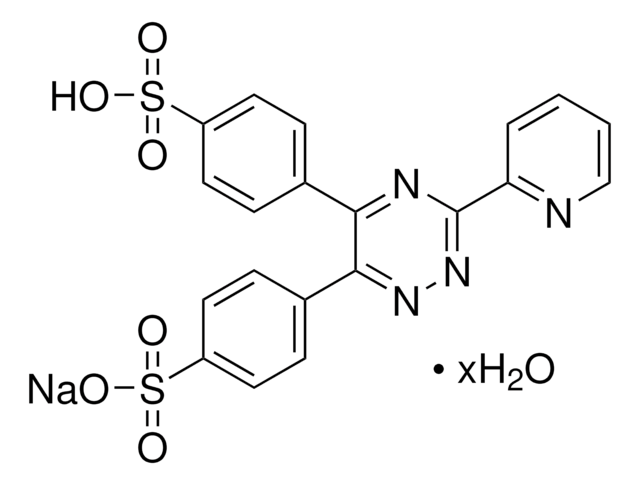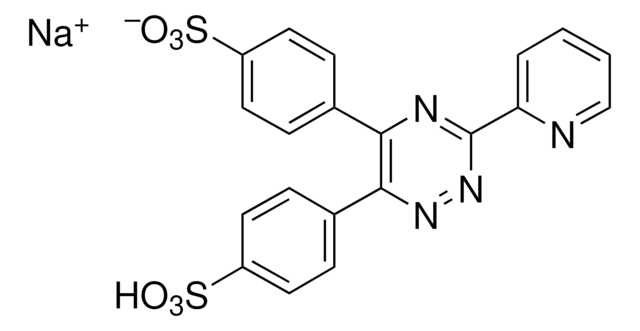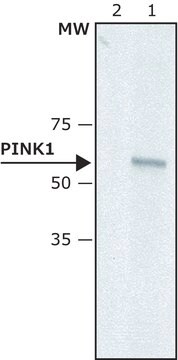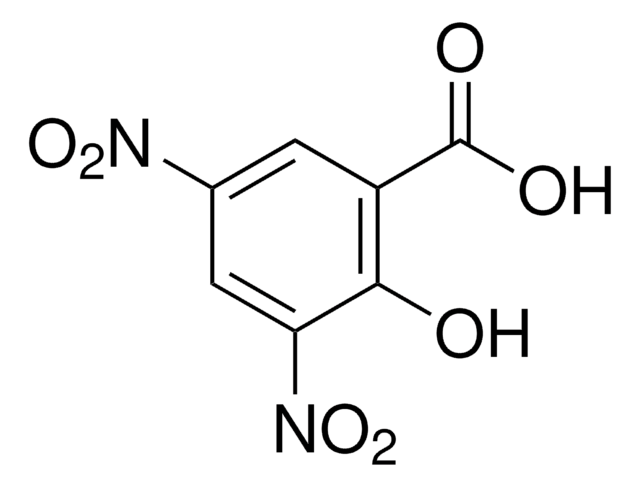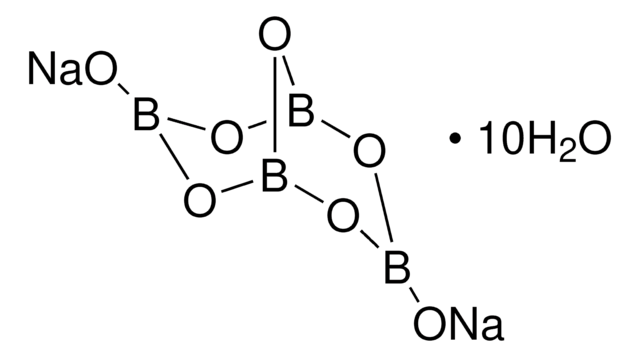Wichtige Dokumente
P5338
3-(2-Pyridyl)-5,6-Diphenyl-1,2,4-Triazin-4′,4′′-Disulfonsäure Natriumsalz
Powder
Synonym(e):
5,6-Diphenyl-3-(2-pyridyl)-1,2,4-triazin-4,4′-disulfonsäure Natriumsalz, PDT disulfonat
About This Item
Empfohlene Produkte
Produktbezeichnung
3-(2-Pyridyl)-5,6-Diphenyl-1,2,4-Triazin-4′,4′′-Disulfonsäure Natriumsalz, BioXtra
Produktlinie
BioXtra
Qualitätsniveau
Form
powder
Verunreinigungen
≤0.0005% Phosphorus (P)
≤0.1% Insoluble matter
mp (Schmelzpunkt)
≥300 °C
Anionenspuren
chloride (Cl-): ≤0.1%
Kationenspuren
Al: ≤0.001%
Ca: ≤0.01%
Cu: ≤0.0005%
Fe: ≤0.0005%
K: ≤0.005%
Mg: ≤0.001%
Pb: ≤0.001%
Zn: ≤0.0005%
Anwendung(en)
diagnostic assay manufacturing
hematology
histology
Lagertemp.
room temp
SMILES String
[Na+].OS(=O)(=O)c1ccc(cc1)-c2nnc(nc2-c3ccc(cc3)S([O-])(=O)=O)-c4ccccn4
InChI
1S/C20H14N4O6S2.Na/c25-31(26,27)15-8-4-13(5-9-15)18-19(14-6-10-16(11-7-14)32(28,29)30)23-24-20(22-18)17-3-1-2-12-21-17;/h1-12H,(H,25,26,27)(H,28,29,30);/q;+1/p-1
InChIKey
ZGVNYCXXBQPDPQ-UHFFFAOYSA-M
Suchen Sie nach ähnlichen Produkten? Aufrufen Leitfaden zum Produktvergleich
Allgemeine Beschreibung
Anwendung
It has also been used in ABTS radical scavenging assay to determine the antioxidant activity of honey samples.
Lagerklassenschlüssel
11 - Combustible Solids
WGK
WGK 3
Flammpunkt (°F)
Not applicable
Flammpunkt (°C)
Not applicable
Persönliche Schutzausrüstung
Eyeshields, Gloves, type N95 (US)
Hier finden Sie alle aktuellen Versionen:
Besitzen Sie dieses Produkt bereits?
In der Dokumentenbibliothek finden Sie die Dokumentation zu den Produkten, die Sie kürzlich erworben haben.
Kunden haben sich ebenfalls angesehen
Unser Team von Wissenschaftlern verfügt über Erfahrung in allen Forschungsbereichen einschließlich Life Science, Materialwissenschaften, chemischer Synthese, Chromatographie, Analytik und vielen mehr..
Setzen Sie sich mit dem technischen Dienst in Verbindung.